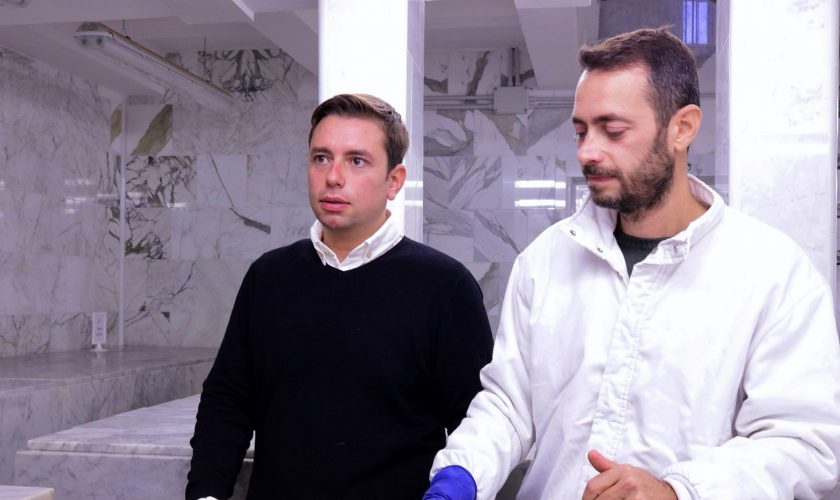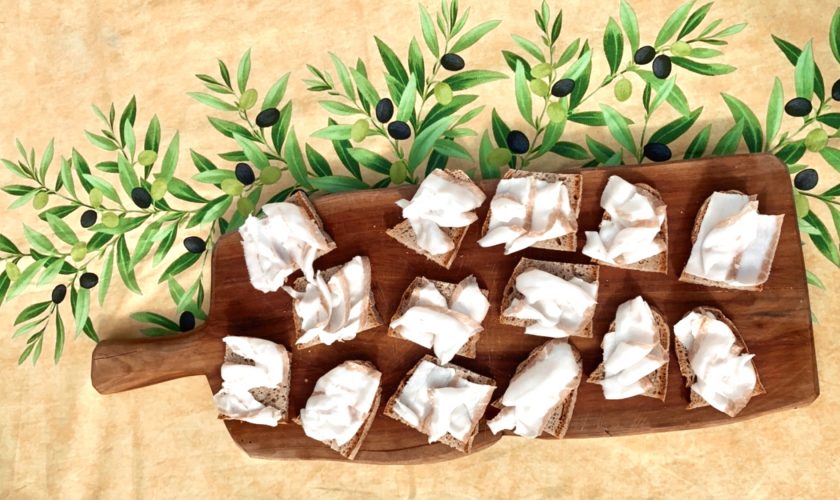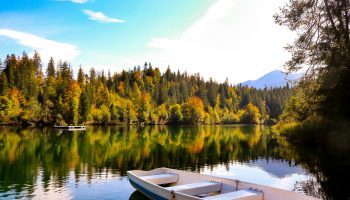Back in the 70s, an Italian family immigrated from south Italy to Tuscany transporting 2000 sheep on a ferry to fulfil the dream of their cheese factory
During my press trip organized by Buyfood Tuscany, I had the chance to hear the most beautiful stories of Italian food entrepreneurs. Before starting with the stories, let me share with you some important facts about this annual event taking place to promote the true Italian taste in the region of Tuscany.
- Buyfood Toscana 2021 is an international showcase of certified agri-food products promoted by the Region of Tuscany
- Over 2 thousand tastings take place across 48 hours dedicated to foreign buyers from 19 countries around the world. If you are a buyer, this is your event to mark on the agenda for next year! You get the chance to taste products and talk to experts from the sector.
- The region of Tuscany comes first for the denominations and cultivated areas: They have over 70 thousand hectares* with 31 certified productions*, which is one of the highest concentrations of farmhouses in Italy!
- With 31 agri-food products* (16 DOP and 15 IGP) recognized at the EU level, in 2021, Tuscany represents 10% of national GI awards. Do you like to read more about this certification? Check my blog post here and even find a recipe on how to prepare your Tuscan dish at home!
Let’s dive into the visited Tuscan artisan products
First stop: Production of the Pecorino delle Balze DOP at Fattoria Lischeto, Volterra
A series of landslides caused by the erosion of clayey soils created the unique, characteristic landscape of Volterra. Some experts claim, that this region provided the backdrop to some of Leonardo da Vinci’s most famous paintings. And since food and art are very well connected, this valley is predicted to offer one of the most prestigious pecorino cheeses of Tuscany!
Very close to Volterra we meet Giovanni Cannas, the owner of the farm Fattoria Lischeto. He introduces us to the properties of the pecorino cheese and his personal business story. His grandfather came to Tuscany from Sardinia in the 60s. With him came 2000 sheep by boat! This man was Giovanni’s muse and introduced him to cheese making. Giovanni shares with enthusiasm how he built his business from a young age. Can you imagine that he used a loaf of cheese as a means of payment to get into discos? His nights were long by that time, after dancing at the disco he spent several more hours in his cheese production. The cheesemaker owes his breakthrough to the famous Italian singer Renato Zero. He tasted Giovanni’s cheese at an event and from then on he became his loyal customer.
What makes the Pecorino delle Balze Volterrane DOP special?
The delicate cheese is made exclusively with raw, whole sheep’s milk and vegetable rennet sourced from wild cardoon or artichoke inflorescences. The use of vegetable rennet instead of animal rennet gives the product organoleptic characteristics that make it sweeter than other cheeses made from sheep’s milk.
How to enjoy this pecorino cheese best?
It’s eaten “fresh and “semi-seasoned” as an appetizer, along with cured meats and vegetables in oil, or as a table cheese. The “seasoned” or “da asserbo” variants, on the other hand, are usually grated on first courses seasoned with meat sauce, or in soups and stuffed pasta. It goes very well with Tuscan red wines, including aged ones. We enjoyed a fantastic lunch prepared at Giovanni’s Farm. My absolute highlight was the soft and tasty gnocchi with minced sheep ragu meat and for dessert, the delicate ice cream prepared with fresh sheep milk!
I recommend visiting this holiday farmhouse and staying there for 2 nights! Book your trip here!
Do you like to have more information about the consortium? Find them online consorziopecorinobalzevolterranedop. The Consortium for the Protection of Pecorino delle Balze Volterrane DOP brings together growers. For many years, the Consortium has guaranteed that only pecorino cheese that complies with the production regulations can be called Pecorino delle Balze Volterrane DOP.
Second stop: Tour at the oil mill of the cooperative Agricola Olio Terre dell’Etruria, Castagneto Carducci with an olive oil tasting
Together you are just stronger! The cooperative Terretruria Toscana has about 3500 associated farms. It represents the most important entrepreneurial reality of the Tuscan agricultural section. What fascinated me a lot is the fact, that they produce biogas out of the stones from the olives and contribute to renewable energy, too and nothing is wasted from the olives.
1000 tons of olives are processed a day
After the visit to the production site, we had the opportunity to taste different of their olive oils. With the guidance of a group of experts, we could find out the different flavours and characteristics of their extra virgin olive oils.
Some principal typical Tuscan olive cultivars you need to know!
The extra virgin olive oils from Frantoio olives are characterised by a medium-intense fruitiness, bitterness, and pungency, with a prevailing aroma of fresh almond and light notes of freshly-cut grass/green leaves and artichoke.
The extra virgin olive oils from Leccino are medium fruity in the taste, with medium-light bitterness and pungency and a prevailing aroma of fresh almond and light notes of freshly-cut grass/green leaves and artichoke
Extra virgin olive oils from Leccio del Corno are characterized by a medium-intense fruitiness, bitterness, and pungency, with a prevailing aroma of freshly-cut grass/green leaves, fresh almonds, and tomato.
My favorite Tuscan olive oil tastes Fragrant, soft, light, aromatic, pleasantly spicy, and bitter, with low acidity!
Extra virgin olive oil Toscano IGP
This oil is obtained from three indigenous olive varieties: Frantoio, Leccino and Moraiolo. The olives are hand picked and come from 5 distinct sub-regions as Colline di Arezzo, Colline di Firenze, Colline della Lunigiana, Montalbano and Monti Pisani.
If you are travelling around Tuscany, don’t miss the “olive oil roads” where you can discover more about this delicious olive oil.
Third stop: Production of the Lardo di Colonnata IGP, Larderia Sanguinetti, Colonnata (Carrara)
The last visit of our press hit the production of the IGP labelled Lardo di Colonnata up in the valley Colonnata which is close to Carrara and very well known for its marble.
What do you think marble and lard have in common?
Have a closer look at the lard, doesn’t it have a fine structure as marble? Standing in front of the Colonnata mountains observing the lines of the mountains, on the other hand, holding the lardo bruschetta I feel like they have a lot in common!
The production of the lardo di Colonnata IGP follows a very strict protocol to achieve the IGP label. Emanuele and his brother showed us around their facilities and explained the procedure of production. The lard is taken specifically from the back of the pig. Several Cuts of fat are layered with salt, rubbed with garlic, and then seasoned with rosemary and sometimes sage, star anise, cloves, or other spices. After the lard is placed in marble tubs, called conche, more marble is used to cover it. The ageing time is at least 6 months. A particularity you have to know: the marble in Colonnata has a very fine grain that makes it a perfect, breathable tub for curing the lard.
For some Tuscans, aging salt-rubbed pork fat to a voluptuous ooze is as high an art as David
Emanuele and his brother started this business during the economic crisis in Italy back in 2008. Many of their friends left the region to seek their luck abroad. The two brothers felt the urge to stay in Carrara and give their local artisan production a chance. They are among the most important producers of the Lardo di Colonnata IGP and export to Europe and local Italian gastronomy retailers.
How to enjoy the lard best
Locals prefer to enjoy the sweet, savoury, and creamy lard by itself or with a crust of bread! It pairs well with polenta or seafood, too. The combination of bread and fat was a traditional miner’s lunch. The calories which locals credit were keeping marble workers strong. The lard pairs well with polenta or seafood, too.
This culinary trip was full of discoveries for me! I left Tuscany with memorable food stories and great new food friendships!
I big thank you to Buyfood Toscana and the organizer Mariangela Della Monica – Head of the FST press office – for inviting me to this culinary excursion!
Get inspired by more of my travel stories here!





























